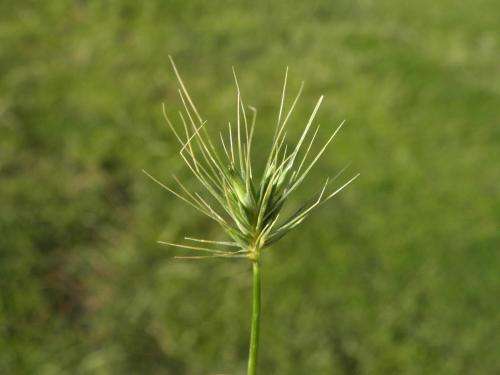Soil acids potentially safeguards against root oxygen loss

An Australian-Japanese collaboration has explored whether organic acids can promote the formation of barriers in the roots of wetland plants, preventing radial oxygen loss.
The study, conducted by the University of WA's School of Plant Biology and Institute of Agriculture and Nagoya University's Graduate School of Bioagricultural Sciences, was published in Functional Plant Biology and tried to determine signals for barrier induction.
UWA's Dr Lukasz Kotula, one of the study's authors, has been concentrating his research on the physiological traits associated with the adaptation of plants to waterlogging.
The work focuses on oxygen transport in roots, the formation of barriers to radial oxygen loss [ROL] (and their structural and functional features)—and water and solute transport across roots.
After completing his PhD, he was awarded a Japanese Society for the Promotion of Science postdoctoral fellowship to further his work on waterlogging tolerance in plants at the University of Tokyo and Nagoya University with Professor Mikio Nakazono, another of the study's authors.
They chose sea barley (Hordeum marinum) for the research because it is tolerant to waterlogging and can provide genetic resources to sensitive crop relatives.
"It forms a barrier to ROL in outer root cell layers when exposed to oxygen-deficient media, as during waterlogging," Dr Kotula says.
"We still do not know the signals involved in the formation of the barrier to ROL.
"It was previously shown that ethylene, which promotes the induction of aerenchyma formation, did not induce a barrier to ROL in rice roots."
In this study, Dr Kotula's team tested the hypothesis that organic acids commonly present in waterlogged soils are involved in the induction of the barrier formation—and found the acids could promote the barriers.
"But the ROL barrier formation might have resulted from the reduction in root extension and thus be associated with root injury rather than with a specific signal for induction of the barrier to ROL," he says.
"Further work is still required to elucidate the signal responsible.
"Premature formation of lignified and suberised barriers in the hypodermis and endodermis might be essential to prevent organic toxins from ingress into the roots and thus act as a defence response.
"Understanding the signals and mechanisms involved in the formation of the barrier to ROL would enable us to manipulate its expression and thus improve waterlogging tolerance in some sensitive dry land species."
More information: Kotula Lukasz, Colmer Timothy David, Nakazono Mikio (2014) "Effects of organic acids on the formation of the barrier to radial oxygen loss in roots of Hordeum marinum." Functional Plant Biology 41, 187–202. dx.doi.org/10.1071/FP13178
Provided by Science Network WA



















